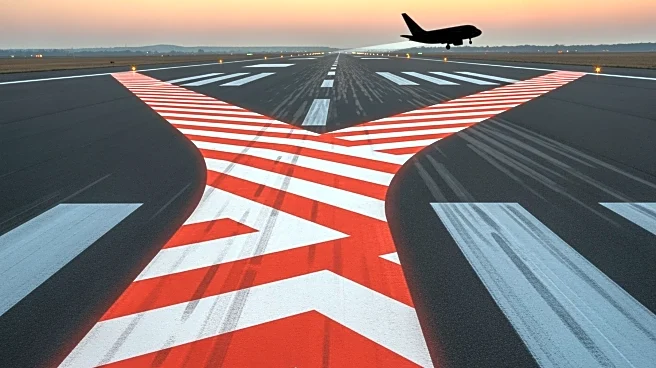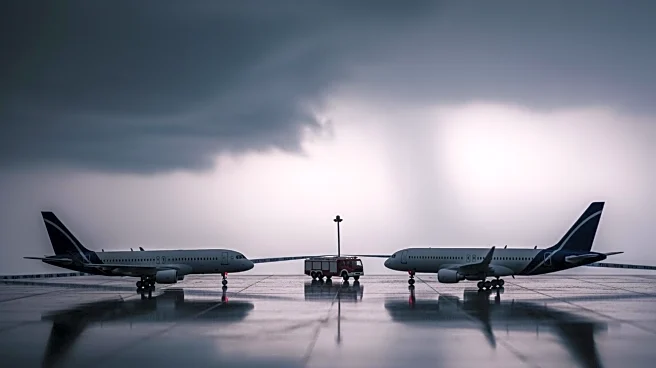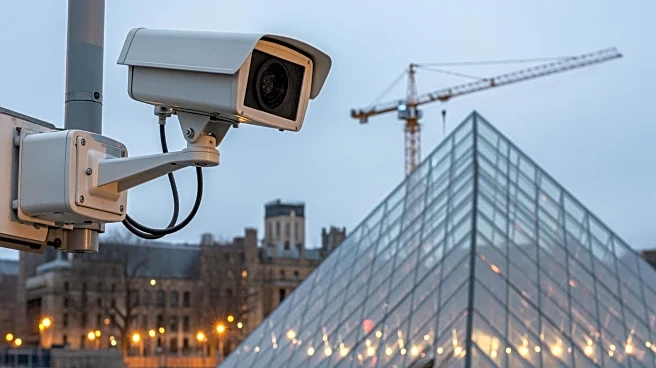What's Happening?
On September 21, 2025, a Nouvelair Airbus A320 narrowly avoided a collision with an EasyJet Airbus A320 at Nice Côte d'Azur Airport in France. The incident occurred when the Nouvelair aircraft, cleared
to land on runway 04L, mistakenly lined up with the parallel runway 04R, where the EasyJet plane was positioned. The Nouvelair plane crossed the runway threshold at 50 feet above ground level and initiated a go-around only six seconds later, missing the EasyJet aircraft by mere feet. The incident took place under challenging weather conditions, including heavy rain and reduced visibility. The French investigation authority BEA has released a preliminary report highlighting the runway lighting differences and the pilots' workload as contributing factors.
Why It's Important?
This incident underscores the critical importance of precise navigation and communication in aviation, especially under adverse weather conditions. The near-collision highlights potential vulnerabilities in runway lighting and pilot workload management, which could have led to a catastrophic accident. The aviation industry must address these issues to prevent future occurrences, ensuring passenger safety and maintaining public confidence in air travel. The event also raises questions about the adequacy of current safety protocols and the need for enhanced training and technology to support pilots during complex landing procedures.
What's Next?
Following the incident, Nouvelair has emphasized its commitment to passenger and crew safety, while the BEA continues its investigation to determine the exact causes and recommend improvements. The aviation community may see increased scrutiny on runway lighting standards and pilot training programs. Airlines and airports might implement additional safety measures, such as enhanced lighting systems and more rigorous approach protocols, to mitigate similar risks. The findings from this investigation could lead to industry-wide changes in safety practices and regulations.
Beyond the Headlines
The incident highlights the ethical responsibility of airlines and regulatory bodies to ensure the highest safety standards. It also reflects the cultural shift towards prioritizing safety over operational efficiency in aviation. Long-term, this event could influence the development of more advanced navigation technologies and stricter international safety regulations, fostering a safer global aviation environment.











